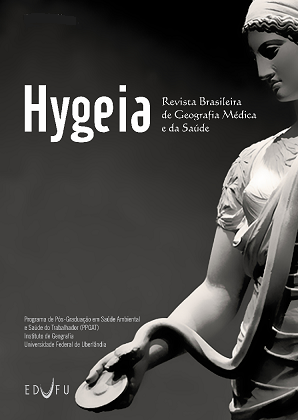MAPPING INTRA-URBAN DIFFERENTIALS OF HEALTH VULNERABILITY
DOI:
https://doi.org/10.14393/Hygeia142805Palavras-chave:
Urbanization. Environment and Public Health. Health Risk Appraisal. Living Conditions. Georeferencing.Resumo
Considering census tracts of urban situation as area units, this study employed an ecological approach to identify and map intra-urban differentials of health vulnerability in Divinópolis, a mid-sized municipality from Minas Gerais State, Brazil. The study evaluated variables from different socioeconomic databases, municipal health indicators and research findings carried out in UFSJ, and classified census tracts in scores. Results showed high sanitary coverage ratios in contrast to health indicators, income-and-literacy levels mostly intermediate and low. It was built a choropleth map for health vulnerability patterns, which made it possible to visualize the distribution of intra-urban differentials and specific urban areas with high health vulnerability that require prioritization of municipal public administration. It was concluded that sanitary improvements gained with socioeconomic development and urbanization policies may not protect populations from unsafe levels of health risk exposure and vulnerability. Score classification methodology seemed to be a fairly simple tool, with wide-range applicability and potentially efficient to identify intra-urban differentials in health vulnerability.








